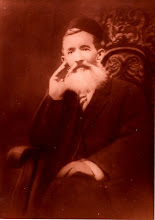I've previously written about my interest in mirror neurons and their possible involvement in autism. I've also written about Marco Iacoboni, the UCLA neuroscientist who has done a lot of the pioneering research on mirror neurons in humans. These are neurons that fire, both in response to performing an action such as a hand movement, but also fire when observing a hand action. These neurons are also associated with mu rhythms, brain waves found over the prefrontal motor strip. These rhythms are suppressed in both typical and autistic people when they observe a motion of their own hand. They are suppressed in typical people when observing the movements of others. In autistic people mu rhythms still occur in the brain when they observe movements of other people. I won't go into all of the minutia here. If anyone is interested, I've written a more detailed post about this here Dr. Iacoboni has also done work in TMS (transcranial magnetic stimulation) where a magnet is put up to the brain and stimulates it by creating a voltage so that a group of neurons will have action potentials so that various areas of the brain can be enhanced or suppressed. Though I don't know a whole lot about TMS, it's an area of research that interests me. It was my interest in these subjects that partially inspired my novel, "The Mu Rhythm Bluff".
After I read Dr. Iacoboni's book, Mirroring People, I sent him an email asking him a few questions I had about the book and the field of mirror neuron research. He was very gracious and answered my questions. At various times I've exchanged email with him. Later, we became friends on facebook.
Due to loneliness from my autism, from time to time I take advantage of the chat feature on FB and message people. Not everyone is into chatting in real time when they are on FB, but Dr. Iacoboni would sometimes chat with me.
There's been a growing interest in using TMS to research the autistic brain or even as a possible treatment for autism. Manuel Casanova has been one of the people to do research in this area. Also Harvard researchers Alvaro Pascual-Leone and Lindsay Oberman have worked with TMS. Peter Enticott in Australia is another scientist in this field.
Iacoboni and his colleagues are now possibly interested in doing research in this area also. Therefore, he thought it might be good if I could meet him and some of the people in his lab so they could get an exposure to a high-functioning person with autism. So, yesterday, I went to the lab and met the people. They asked me some questions and I gave "The Mu Rhythm Bluff" a plug.
Next, Dr. I gave me a brief tour of the facility. There has been some research (though I admit I'm not familiar with most of the details) suggesting that under connectivity in the brain may be one of the causes of autism. That is neurons with very long axons that would connect distant parts of the brain with each other may be underdeveloped in autism. Dr. I seemed to believe that with TMS treatments they could improve the connectivity distant areas of the brain have with each other in autistic people.
One of the problems with TMS may be the magnetic pulses don't reach more than two inches into the brain. Some of the deeper structures of the limbic system, such as the amygdala and the hippocampus, which may be involved in autism lie deeper than this. However, there is a theory that there is a so-called "cascading effect" where various areas of the brain are interconnected to each other. This is why Manuel Casanova chose to stimulate dorsolateral prefrontal cortex in his subjects. Because it was an area of the brain interconnecting many other parts, aside from the fact that his postmortem autopsies found minicolumnar abnormalities in this area.
Of course, no one knows exactly what is going wrong with the autism brain, so which areas to stimulate or inhibit may not be viable option for research.
I'm not sure if TMS will ever be an effective treatment for autism, but I would very possibly be interested in being a research subject in this endeavor. I don't know if I will be or not, but I'll post future developments in the blog.
I enjoyed meeting Dr. I and his staff and hope to see him again some day.
Subscribe to:
Post Comments (Atom)


2 comments:
296I will be interested in knowing how TMS works for you, if you take part in the study. The before and after videos of JER were quite striking after he did TMS. My daughter just took part in an MRT (magnetic resonance technology) study. In her case, the results were small and temporary. At this point she is pretty much as she was before we started the treatment. At the same time, a lot of the people in the study noticed improvement. I have hope that modifications can be made in years to come so that it is more and more effective.
@Shanti, As I said in my post, it's pretty much all up in the air at this point whether I will actually participate in any TMS studies or not. But I'll probably keep Gadfly readers posted. Thanks again for your comments and interest in my blog.
Post a Comment